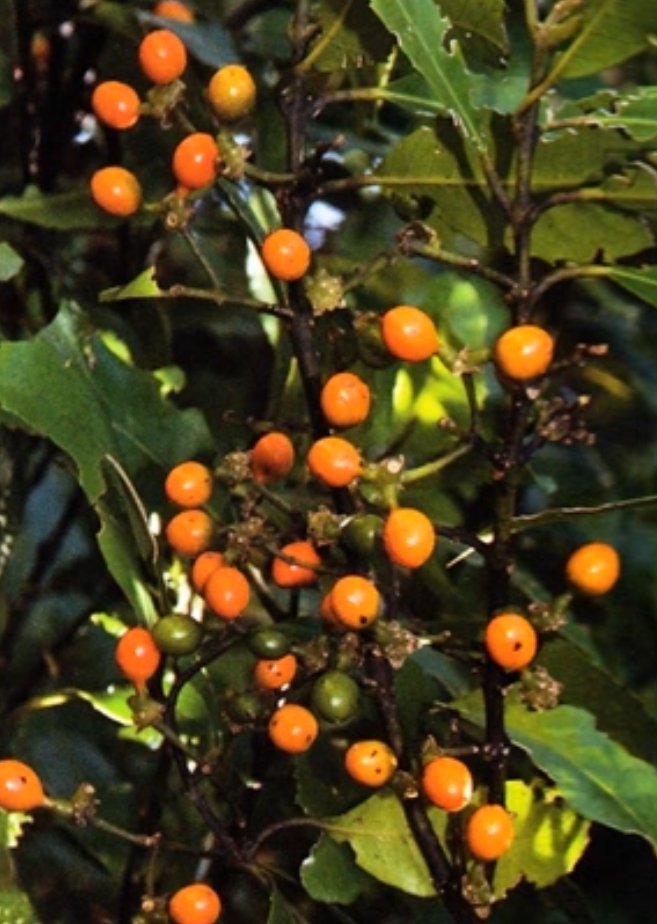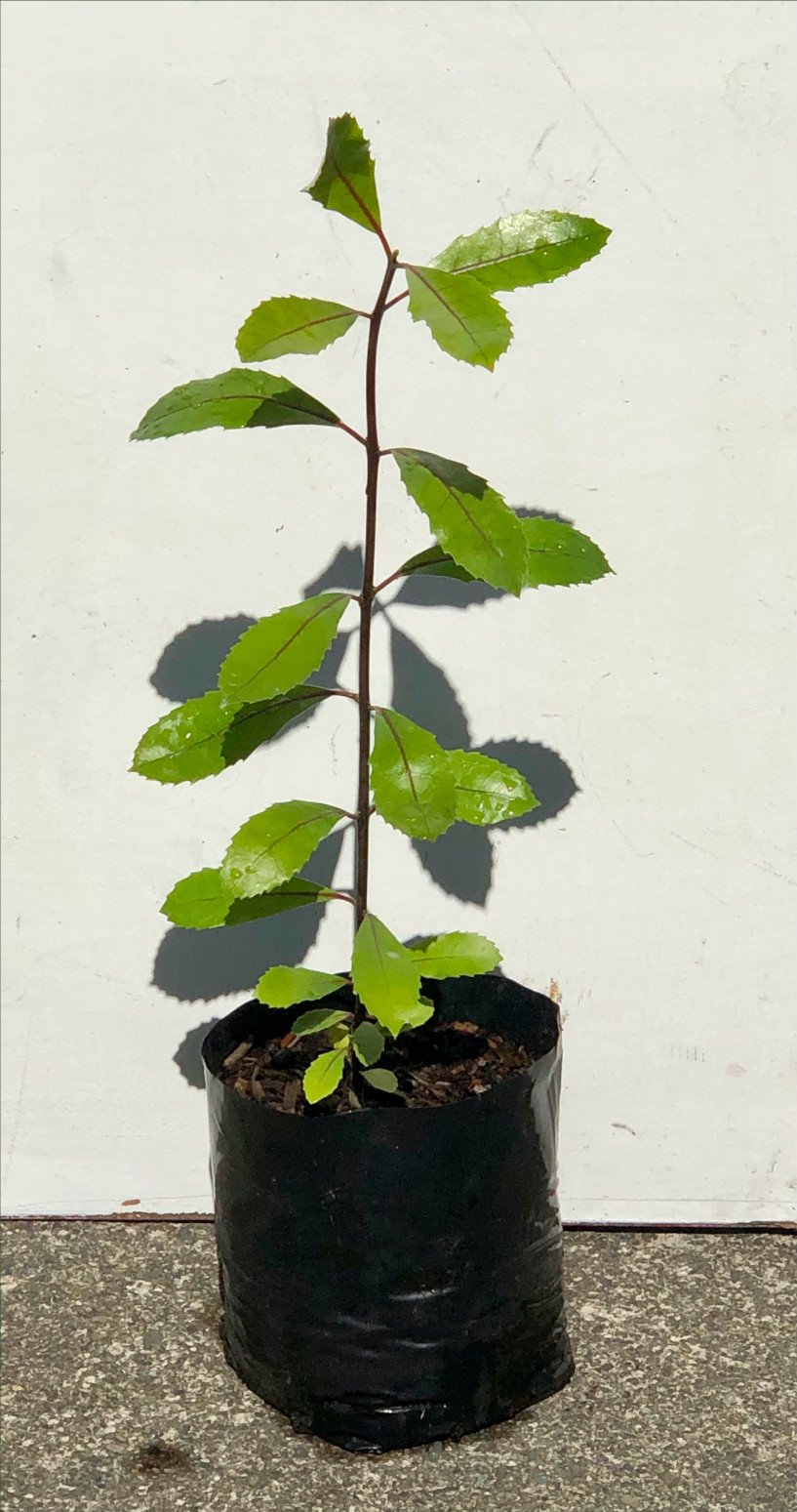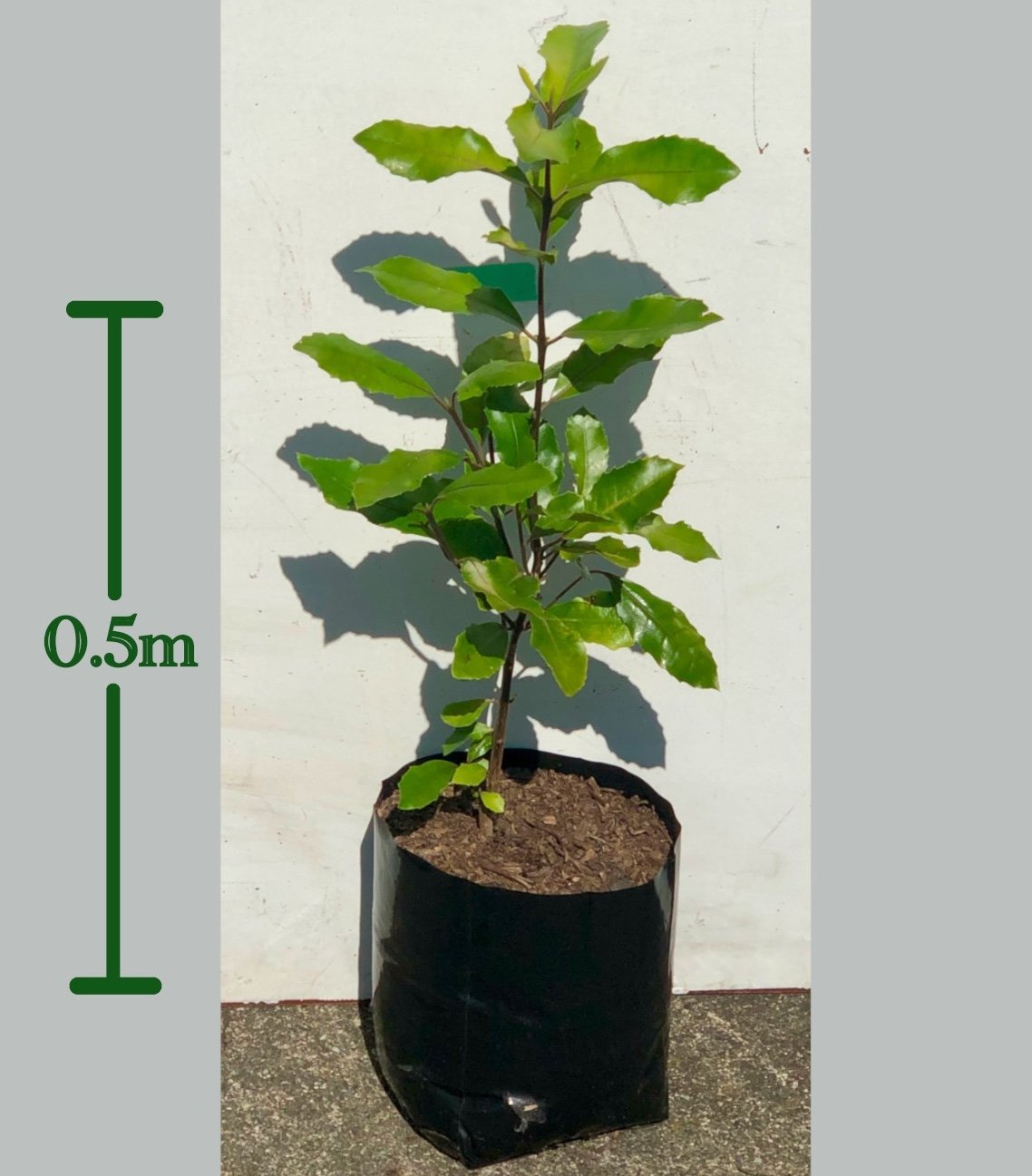 Image 1 of 5
Image 1 of 5

 Image 2 of 5
Image 2 of 5

 Image 3 of 5
Image 3 of 5

 Image 4 of 5
Image 4 of 5

 Image 5 of 5
Image 5 of 5






Hedycarya arborea - Pigeonwood, Porokaiwhiri
Pigeonwood is a common small tree with dark green, glossy, oval leaves that have toothed margins. The leaves grow in pairs on short stalks from a flattened part of the dark twigs. The flowers are simple, green, and around 1cm wide, arranged in small sprays. The bright orange, oval fruit (about 1cm long) is highly attractive to kererū (Hemiphaga novaezelandiae), giving the tree its name “Pigeonwood.”
Growing Conditions:
• Tolerances: Shade, salt, coastal, and free-draining soils.
• Endemic Distribution: Found in the Three Kings, North, and South Islands. In the South Island, it is uncommon in the east south of Kaikōura, reaching its southern limit on Banks Peninsula. It is more widespread in the west, reaching northern Fiordland.
Specifications:
• Height: 12m
• Flowering: December – February with cream or white flowers.
• Fruiting: March – June with bright orange fruit.
Ideal Uses:
• Bird food & attractant
• Bee food
• Forest restoration
A valuable tree for attracting native birds and enhancing biodiversity!
Approximate product size & price:
• PB3/4 (5cm – 20cm, 350ml): $8 each | 9 for $60
• PB3 (20cm – 70cm, 1.5L): $15 each | 5 for $60
• PB8 (50cm+, 3.5L): $32 each | 4 for $100
More than happy to mix and match bulk pricing with plants of the same price range.
Timeframe:
We ship Monday – Wednesday for South Island customers and Monday/Tuesday for Rural and North Island customers. Orders placed outside these days will be fulfilled the following week.
Local pick ups and/or deliveries will be made by arrangement.
Need a custom shipping quote? If the set pricing seems a bit steep, get in touch with us at Nelson Natives, and we’ll see what we can do.
“We’ll donate $1 per plant sold to national conservation efforts, helping to protect and restore New Zealand’s natural heritage”
Pigeonwood is a common small tree with dark green, glossy, oval leaves that have toothed margins. The leaves grow in pairs on short stalks from a flattened part of the dark twigs. The flowers are simple, green, and around 1cm wide, arranged in small sprays. The bright orange, oval fruit (about 1cm long) is highly attractive to kererū (Hemiphaga novaezelandiae), giving the tree its name “Pigeonwood.”
Growing Conditions:
• Tolerances: Shade, salt, coastal, and free-draining soils.
• Endemic Distribution: Found in the Three Kings, North, and South Islands. In the South Island, it is uncommon in the east south of Kaikōura, reaching its southern limit on Banks Peninsula. It is more widespread in the west, reaching northern Fiordland.
Specifications:
• Height: 12m
• Flowering: December – February with cream or white flowers.
• Fruiting: March – June with bright orange fruit.
Ideal Uses:
• Bird food & attractant
• Bee food
• Forest restoration
A valuable tree for attracting native birds and enhancing biodiversity!
Approximate product size & price:
• PB3/4 (5cm – 20cm, 350ml): $8 each | 9 for $60
• PB3 (20cm – 70cm, 1.5L): $15 each | 5 for $60
• PB8 (50cm+, 3.5L): $32 each | 4 for $100
More than happy to mix and match bulk pricing with plants of the same price range.
Timeframe:
We ship Monday – Wednesday for South Island customers and Monday/Tuesday for Rural and North Island customers. Orders placed outside these days will be fulfilled the following week.
Local pick ups and/or deliveries will be made by arrangement.
Need a custom shipping quote? If the set pricing seems a bit steep, get in touch with us at Nelson Natives, and we’ll see what we can do.
“We’ll donate $1 per plant sold to national conservation efforts, helping to protect and restore New Zealand’s natural heritage”